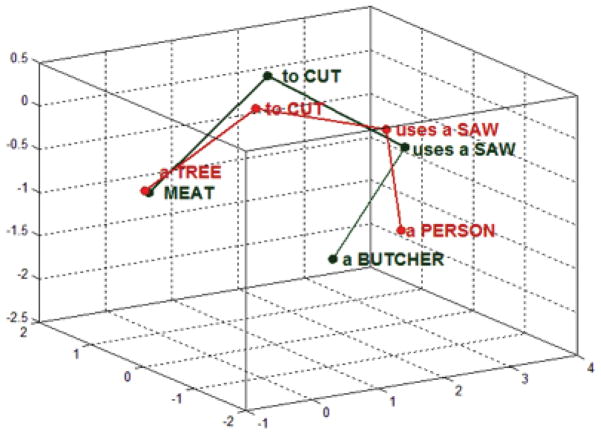Figure 5.
Trajectories through 3 (of 20 total) dimensions of an SRN’s hidden layer. These correspond to movement through the state space as the network processes the sentences “A person uses a saw to cut a tree” and “A butcher uses a saw to cut meat.” The state of the network resulting from any given word is what encodes its expectancies of what will follow. Thus, the states at “cut” in the two sentences differ, reflecting different expectations regarding the likely patient this is to follow (resulting from the use of different instruments). Once the patient is processed, it produces a state appropriate to the end of the sentence. This is why both patients produce very similar states.

